Site menu:
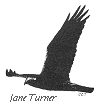
March 2017 Newsletter
Highlights March '16 to Feb '17.
Colour Ring Report.
February Bird News.
Forthcoming Events.
Latest Newsletter.
Highlights - March 2016 to Feb 2017.
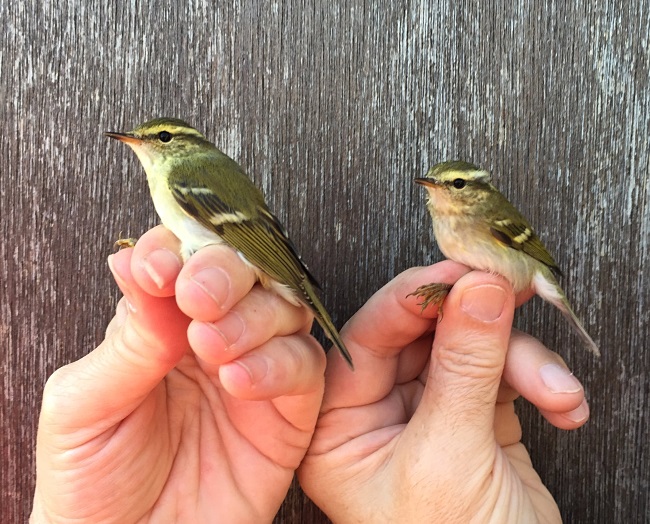
On the 19th Anniversary of the first Newsletter on this website I again
publish the highlights from the previous twelve months.
It was a busy 12 months, not, perhaps,
so much in the way of
mega-rarities but for the fact that so many records were broken for
numbers of particular species. So rather than trying to summarise
everything I'll concentrate on that aspect:
Common Scoters
Numbers of Common Scoters off North Wirral over the past three years has just been phenomenal. 30,000 in March 2016 was not quite as high as the previous month but then a remarkable 40,000 were counted on a flat calm sea in October which is the highest ever accurate count for the area. See Birds in Abundance! for more details.
Pink-footed Geese
Records numbers were present in the previous winter (8,900 Feb 2016) but the thing I remember most was the day of a spring tide on April 9th 2016. Around 4,000 were still present on the marshes - probably a record in itself for that month - and it was on that day that all 4,000 decided it was time to move north. So from dawn until high tide at 1pm flock after flock flew off and these were seen over Hilbre and North Wirral where many local birders live, including myself. I was at Heswall just before high tide and it was an awesome sight to see what was probably the last of them leave in a flock 1,000 strong.
Avocets
After several years of heavy predation the Avocets had a great breeding season at Burton Mere Wetlands in 2016, the max count of chicks was around 74 - a record high.
Little Terns
Another record number of pairs bred at Gronant with 141. 170 young fledged, the second highest (the highest being 216 in 2010).
Spoonbills, Great White Egrets and Cattle Egrets.
Amazingly, we had record numbers of all three of these species of white herons (may be Little Egrets as well but I haven't seen total counts for the estuary for 2016/17). The max counts were 12 Spoonbills, 12 Great White Egrets and six Cattle Egrets - see Egrets Galore!
Yellow-browed Warbler
September and October brought by far the best Yellow-browed Warbler passage ever recorded locally. The total of 35 records were more than three times the previous record. See Yellow-browed Warbler Influx 2016.
Brent Geese
The steep increase of pale-bellied Brent Geese on the estuary has been well documented and reached a peak of 262 in 2012 after which numbers have plateaued out for four years. But 402 on West Kirby Shore/Little Eye/Bird Rock in November 2016 smashed the previous record.
Marsh Harriers
Even in recent years more than one or two over-wintering Marsh Harriers on the estuary is virtually unheard of, but this last winter, 2016/17, has been exceptional. Just how many in total have been present has been the subject of much debate. It is known several birds have been roosting on the marshes all winter and seven were seen there in the air at once, but there have been several claims of double-figures with at least 12 counted coming into roost in the evening. A remarkable development.
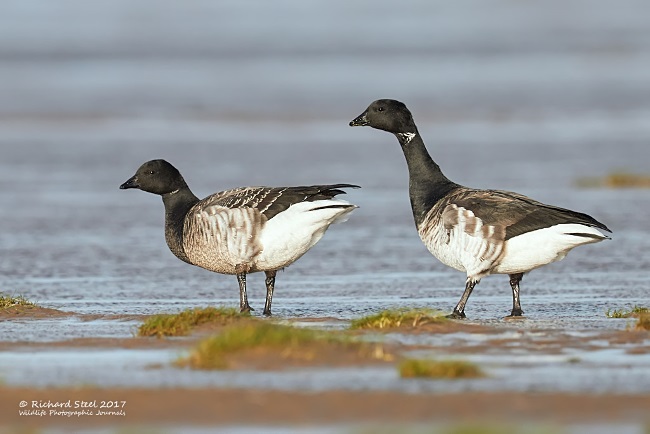
http://wildlifephotographic.blogspot.com/
Colour Ring Report
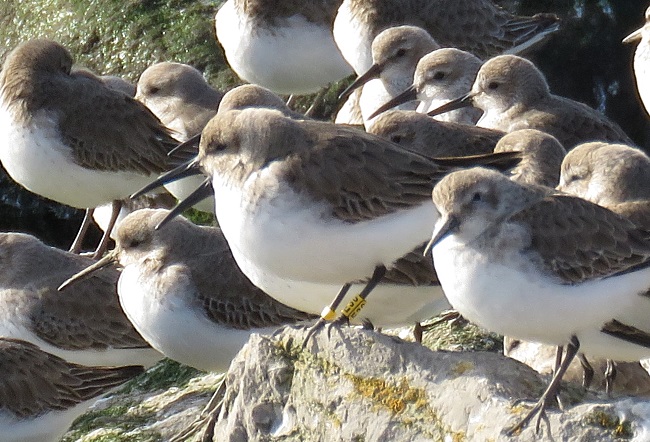

There have been good numbers of Black-tailed Godwits off
Thurstaston and Heswall all February with well over 1,000 most days and
consequently we've logged a total of 26 different colour-ringed birds -
most years there are virtually no godwits here in February and the
total number of colour-ringed Black-tailed Godwits logged in February
for the previous three years is just eight! However, it was very
noticeable that the turn-over of birds was very low with the same birds
occurring day after day, below I describe the only 'new' one seen.
There have been good numbers of Dunlin and we managed to see two ringed
ones, in contrast Knot numbers have been low but even so we managed to
see five ringed ones. We've also recorded three colour-ringed
Oystercatchers but I intend to do an Oystercatcher 'special' next month
so will save them until then.
Of note is that the 'new' Black-tailed
Godwit, two of the Knot and an Oystercatcher were all ringed within a
few miles of each other in north-west Iceland (Westfjords peninsula)
whereas an Oystercatcher and two more Knots were ringed on the same
small island in the Waddensee (Schiermonnikoog). Quite a coincidence!
Black-tailed Godwit
WW-WYflag, ringed as a chick in NW Iceland on July 11th 2013.Recorded on Thurstaston Shore at the end of January 2017.
After ringing the bird wasn't seen until May 2015 when it was spotted on the Gower Peninsula, South Wales. It then turned up at Marshside RSPB (Lancs) in September 2016 and stayed there until early October. Then no more records until it arrived at Thurstaston.
My colleague Matt Thomas was part of the group which ringed this bird on Iceland in July 2013.
Dunlins
E30 on yellow ring - Y.Ringed in eastern Belarus (47km south of Gomel) on September 15th 2016.
Recorded at West Kirby Marine Lake on February 13th 2017.
Eastern Belarus is not an obvious migration route but some do breed in western Belarus and also the Baltic states so may be it is one of those.
ZYZ - black on white ring (right leg).
Ringed in Gdansk, Poland, on July 20th 2015.
Recorded at West Kirby Marine Lake on February 13th 2017.
This is the 12th Dunlin we have seen which has been ringed in Gdansk, first one was in February 2011.
Knots
The two Knot ringed in Iceland are the first we've seen from there, they are ringed by the same group that ring Knot in Northern Norway.L3GLLG (if you wish to understand the code for Dutch ringed knot download a PDF file here.)
Ringed at De Richel island on the Waddensea, Netherlands, on September 29th 2011.
Recorded on Thurstaston shore on February 1st 2017.
Also recorded eight times on the island of Griend, Waddensea, between July 2014 and August 2016.
L7RRLR.
Ringed on the island of Schiermonnikoog on the Waddensea, Netherlands, on October 17th 2009.
Recorded on Thurstaston shore on February 21st 2017.
Also recorded on Thurstaston shore in November 2010 and November 2013, no other records.
R - Y flag with number 94.
Ringed at at Dynjandisvogur in NW Iceland on May 25th 2014, on spring migration.
Recorded on Thurstaston shore on February 3rd 2017. No other records.
Y - Y flag with letters UUK.
Ringed at at Dynjandisvogur in NW Iceland on May 25th 2014, on spring migration.
Recorded on Thurstaston shore on February 12th 2017. No other records.
Black-headed Gull
2J75. White on blue ring.Ringed at Bowness, Cumbria, on January 3rd 2015.
Recorded at West Kirby Marine Lake on February 10th and 28th 2017.
Also recorded in autumn at Bowness in 2015 then January to March 2016 at West Kirby Marine Lake.
Richard Smith.
Colour-rings were also reported by Matt Thomas, Steve Hinde, Colin Schofield and Les Hall.
Top of Page
February Bird News
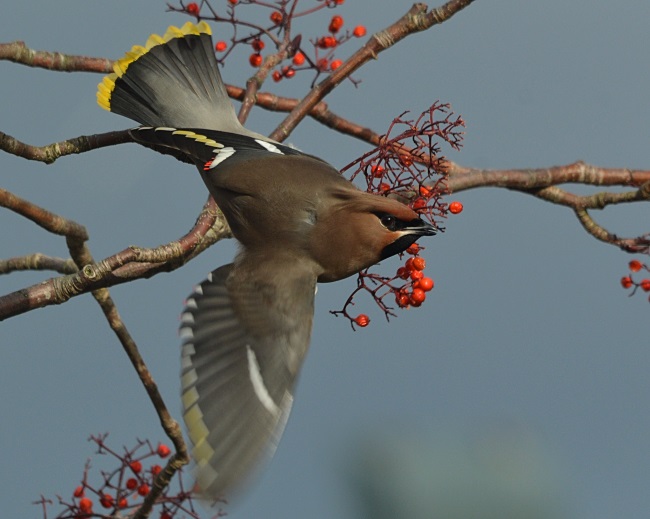
It continues to be a good Waxwing winter across the country and we've had a few small flocks here, including at Irby and Parkgate both of which stayed for a few days giving people a chance to get good views.
Good numbers of Black-tailed Godwits remained at Thurstaston with up to 2,000 which is an unusually high count for late winter. There was a noticeable influx of Dunlins through the month and there was a total of around 10,000 at West Kirby including 2,750+ on the rocks by West Kirby Marine Lake giving great views. These are literally just a few feet away and on the 13th, which was a lovely sunny day, a constant stream of people walking along the promenade were asking what they were - although 'are they swallows?' was a bit much!
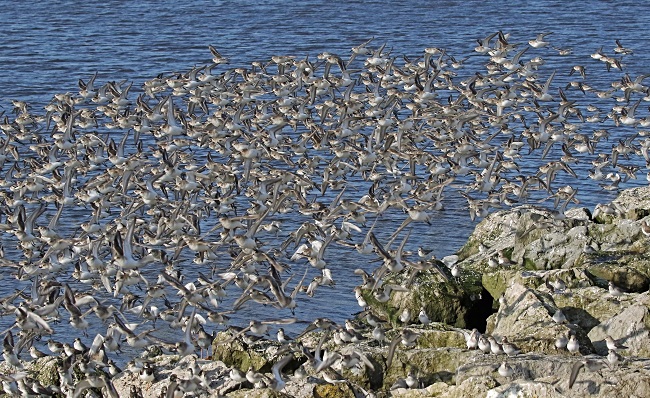
There have been good numbers of wildfowl around including 5,000 Pintail and 3,000 Wigeon off Oakenholt Marsh. It was good to see several hundred Pink-footed Geese feeding in a field in Irby (close to the waxwings) for several days and you wonder how many other flocks were feeding in fields unobserved. Max count of Brent Geese at Hilbre was 306, a record count for the island. On the 24th, the day after Storm Doris, 8,300 Common Scoter were around Hilbre, including 5,000 in the Swash which is very unusual.
Perhaps the most remarkable record of the month was seven Black-necked Grebes at Connah's Quay on the 5th, they were seen by a very experienced birder so I have no doubt about the record. Also at Connah's Quay was the usual large flock of Twite with at least 50 there all month. Little Grebes don't often make the sightings page but they obviously love Shotwick Boating Lake and there were 18 there on the 7th.
Five
Snow Buntings were at Point of Ayr with one or two also on the English
side of the estuary. Marsh and Hen Harriers continued to be seen on a
daily basis and there were up to three Short-eared Owls seen off
Denhall Quay.
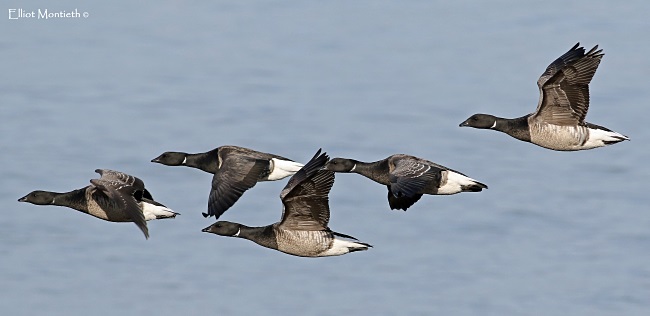
https://elliotsbirdingdiaries.wordpress.com/
Top of Page
What to expect in March
If you see an early migrant please email
 and, if its a first,
I'll put it in the 2017 table.
and, if its a first,
I'll put it in the 2017 table.| Species | 2016 | Location | 2015 | 2014 |
|---|---|---|---|---|
| White Wagtail | 15th March | Hilbre | 10th March | 8th March |
| Sand Martin | 16th March | Neston | 7th March | 20th March |
| Wheatear | 23rd March | Meols | 11th March | 10th March |
| Swallow | 24th March | Shotton | 20th March | 19th March |
| Willow Warbler | 29th March | Leasowe
and Thurstaston |
22nd March | 12th March |
| House Martin | 7th April | Parkgate | 31st March | 29th March |
| Whitethroat | 13th April | Burton | 12th April | 4th April |
| Cuckoo | 21st April | Leasowe | 20th April | 2nd May |
| Swift | 22nd April | Burton | 19th April | 3rd May |
Although some over-wintering birds will start to leave there will still be plenty to see on the estuary and there are some big high tides both at the beginning and end of the month.
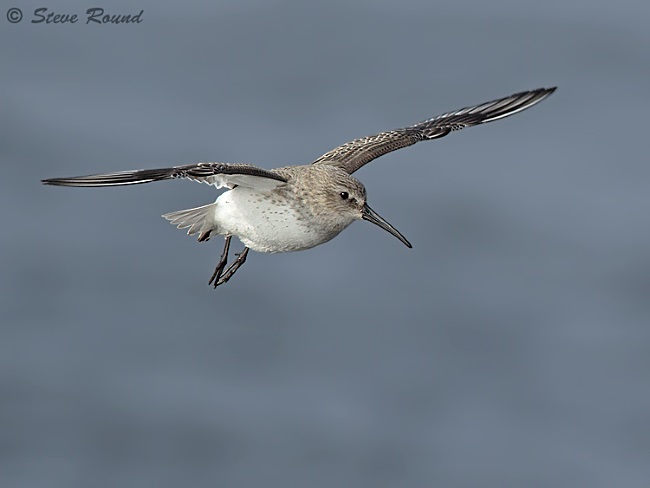
http://stevenround-birdphotography.com/
Top of Page
Forthcoming Events
March Highest Spring Tides (Liverpool)
Also
see Tides
page.
1st March, 12.54hrs (GMT), 9.8m.
29th March, 12.52hrs (BST), 9.9m.
30th March, 13.33hrs (BST), 10.0m.
31st March, 14.16hrs (BST), 9.8m.
Forthcoming Events
Organised by the Wirral
Ranger Service , Flintshire
Countryside Service and the
RSPB (Dee Estuary):
All these events and walks have bird interest, even those not
advertised specifically for birdwatching. No need to book for these
events unless specified - please check below.
Join the Wirral Rangers and the RSPB on a guided walk to
Hilbre Island
at low tide.
We
will walk to the islands to look for the birds that make Hilbre their
home during the winter months. Hopefully we will connect with Brent
Geese and Purple Sandpipers as well as the usual variety of waders and
wildfowl present on the islands.
Booking essential:
places limited, email deeestuary@rspb.org.uk or
ring 0151 353 8478. £5
per person.
Bring binoculars and wear warm waterproofs.
Sunday 26th
March,
Raptor Watch at Parkgate.
1pm to dusk.
Join
us for a chance to see up to seven different birds of prey including
peregrine and merlin, plus two types of owl that all make their home on
the RSPB Dee Estuary nature reserve. With its panoramic views of the
saltmarsh, Parkgate is one of the best places to watch for the birds
hunting.
Stick around until dusk for a chance to see the graceful
and endangered hen harriers flying into roost for the night on the
marsh close to the Old Baths car park, plus a ghostly barn owl emerging
to hunt.
No booking required, come along any time between 1 pm and
sunset. Dress appropriately for the weather and don't forget your
binoculars! Public toilets and various pubs and cafes are situated
close by along Parkgate promenade.
Ring 0151 353 8478 for further details.
Directions
The Old Baths car park, Parkgate (just north of The Boathouse pub).